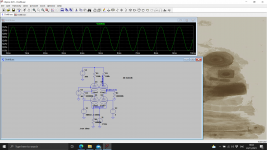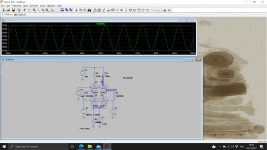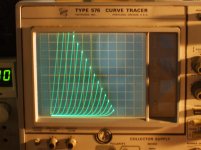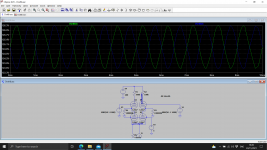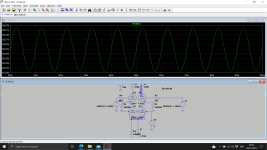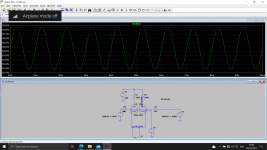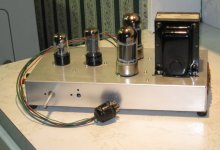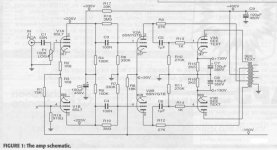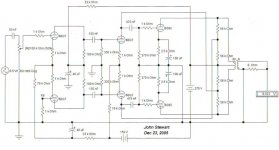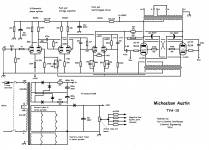Veiset never uploaded anything to DIYaudio, so nothing remains of -any- of his schematic posts. Here is the actual thread:
https://www.diyaudio.com/forums/tubes-valves/114216-feedback-scheme.html#post1383884
The driver UL part was like what George (Tubelab) just posted (without the cathode drive to the outputs), and with the added resistors to pull the DC driver screen levels down to within spec for the driver tube. Oh, and the N Fdbks came from UL taps on the OT in Veiset's scheme.
Veiset's design also had myriad other local N Fdbks, to the output cathodes, to the driver cathodes, global.... and proved to be unstable, so he never finished it.
I tried the driver screen N Fdbk on the curve tracer here, and that worked well in principle (no OT involved in the test). Taking N Fdbks from the OT UL taps does have the hazard of possible phase shift causing oscillation. But the UL taps are generally fairly well coupled to the secondary for most UL OTs in order for plain UL to work well, so are worthwhile trying at least.
I don't think driver UL is particularly new, but what Veiset did was adjust the N Feedback to the driver screens so that they worked at a constant % V of the driver plate Vs. This causes the screens to draw a constant % of the driver plate current, and so they look resistive. (screen current prop. to screen V, so a resistive characteristic) So no Mosfet follower is needed to drive the screens that way. But you are limited to just one specific level of N Fdbk to get the resistive screens. That's probably why George was seeing rather different results for different driver tubes. Depending on the driver gain and g2/g1 Mu, different attenuation ratios would be needed to hit the resistive screen setting. And the quality of the internal g2/g1 Mu triode would affect the quality of the scheme as well. (constant Mu desired) I've used curve tracer selected (triode curves) 12HL7s and 6JC6s (Japan 6JC6 versions have best triode curves versus US 6JC6) (6JC6 is a very similar tube to the 6EJ7, and they were on the $1 list back then) to get good triode curves.
https://www.diyaudio.com/forums/tubes-valves/114216-feedback-scheme.html#post1383884
The driver UL part was like what George (Tubelab) just posted (without the cathode drive to the outputs), and with the added resistors to pull the DC driver screen levels down to within spec for the driver tube. Oh, and the N Fdbks came from UL taps on the OT in Veiset's scheme.
Veiset's design also had myriad other local N Fdbks, to the output cathodes, to the driver cathodes, global.... and proved to be unstable, so he never finished it.
I tried the driver screen N Fdbk on the curve tracer here, and that worked well in principle (no OT involved in the test). Taking N Fdbks from the OT UL taps does have the hazard of possible phase shift causing oscillation. But the UL taps are generally fairly well coupled to the secondary for most UL OTs in order for plain UL to work well, so are worthwhile trying at least.
I don't think driver UL is particularly new, but what Veiset did was adjust the N Feedback to the driver screens so that they worked at a constant % V of the driver plate Vs. This causes the screens to draw a constant % of the driver plate current, and so they look resistive. (screen current prop. to screen V, so a resistive characteristic) So no Mosfet follower is needed to drive the screens that way. But you are limited to just one specific level of N Fdbk to get the resistive screens. That's probably why George was seeing rather different results for different driver tubes. Depending on the driver gain and g2/g1 Mu, different attenuation ratios would be needed to hit the resistive screen setting. And the quality of the internal g2/g1 Mu triode would affect the quality of the scheme as well. (constant Mu desired) I've used curve tracer selected (triode curves) 12HL7s and 6JC6s (Japan 6JC6 versions have best triode curves versus US 6JC6) (6JC6 is a very similar tube to the 6EJ7, and they were on the $1 list back then) to get good triode curves.
Last edited:
I like 6ej7 and use this as LTP. What does not go up the screen goes up the plate, so if the screen currents are not equal you can get DC and AC in balance with mismatched tubes. This is not the case for say a 12ax7 cascade when grids take no current.
Is the 12ax7 a good choice or is the 6dj8a better choice for cascode? I thought the 6dj8 is made for such circuits?
So I have a cascade in LTspice and looking at varying the second grid voltage. I can see really no difference between g2 at 20V and g2 at 100V as long a the output does not clip. Thus I don't really see applying signals to g2 having any affect.
Attachments
The upper tube(s) of the cascode (not cascade) require a differential voltage between the grids to affect the output. Just like the bottom tubes require a differential voltage, The upper grids just control the voltages on the lower plates.
By the way, I think you will find the $1 6JC6 (Japan) tubes have better triode curves than the 6EJ7/EF184 tubes. Curves below (50V/div Horiz.) .
By the way, I think you will find the $1 6JC6 (Japan) tubes have better triode curves than the 6EJ7/EF184 tubes. Curves below (50V/div Horiz.) .
Attachments
Last edited:
12AX7 has a Mu of 100, so the upper grids will have very little effect on the bottom tube currents. You may just be seeing granularity effects in the simulation.
I forgot to mention this other PP amp I proposed with shunt cascode phase splitter (don't stop to the first iteration of the schematic): Shunt Cascode Driver meets UNSET for Push-Pull
This one is planned to be built in 2022, when I'll have again a room dedicated to build and test amps, together with a new switchable nfb scheme.
This one is planned to be built in 2022, when I'll have again a room dedicated to build and test amps, together with a new switchable nfb scheme.
I vaguely remember a concept called E-Linear described in a magazine article, probably in Glass Audio. It used feedback from the UL tap to the driver plate.
I got a box of 500 6KT6 tubes for 35 cents each for music synthesizer use. Those things are all over the place. About half of them are marked GT. BRITAIN, but look Japanese or Korean and came bulk packed in boxes with oriental printing. I have identified at least 4 other different constructions and each type has grossly different curves.
I have lots of 6JC6's and 6JD6's, a few 6EJ7's, over 100 6EH7's, a few 6HB6's, some of all the 12 volt tubes including some well used 12BY7's, and a few mystery tubes like the 6059 / 6BR7 from the UK. All will work in this application, but parts values need to be tweaked for best performance.
That's probably why George was seeing rather different results for different driver tubes. Depending on the driver gain and g2/g1 Mu, different attenuation ratios would be needed to hit the resistive screen setting. And the quality of the internal g2/g1 Mu triode would affect the quality of the scheme as well. (constant Mu desired) I've used curve tracer selected (triode curves) 12HL7s and 6JC6s (Japan 6JC6 versions have best triode curves versus US 6JC6) (6JC6 is a very similar tube to the 6EJ7, and they were on the $1 list back then) to get good triode curves.
I got a box of 500 6KT6 tubes for 35 cents each for music synthesizer use. Those things are all over the place. About half of them are marked GT. BRITAIN, but look Japanese or Korean and came bulk packed in boxes with oriental printing. I have identified at least 4 other different constructions and each type has grossly different curves.
I have lots of 6JC6's and 6JD6's, a few 6EJ7's, over 100 6EH7's, a few 6HB6's, some of all the 12 volt tubes including some well used 12BY7's, and a few mystery tubes like the 6059 / 6BR7 from the UK. All will work in this application, but parts values need to be tweaked for best performance.
Another Trick Amp
This one published in Glass Audio Issue 2, 1999. Another 'Proof of Concept', not a complete amp. I powered it from a lab supply. About 25W running a pair of 6080s in PPP. It uses bootstrapping of the drivers in order to solve the drive problem in LO MU triodes. Oddly I was never able to find any other reference to this simple yet effective fix. Many brute force drivers are still used to accomplish what is trivial for this circuit.😀
And a 2nd iteration doesn't need UL taps on the OPT.🙂
This one published in Glass Audio Issue 2, 1999. Another 'Proof of Concept', not a complete amp. I powered it from a lab supply. About 25W running a pair of 6080s in PPP. It uses bootstrapping of the drivers in order to solve the drive problem in LO MU triodes. Oddly I was never able to find any other reference to this simple yet effective fix. Many brute force drivers are still used to accomplish what is trivial for this circuit.😀
And a 2nd iteration doesn't need UL taps on the OPT.🙂
Attachments
Zintolo from post #70. Took me a little time to understand the circuit! If you drive the input triodes hard you could exceed the Vebo of Q1 and Q2.
@ baudoin0:
indeed Q1, Q2, Vb and Vshu must be chosen together to stay within all limits.
Last iterations take care of that, together with the pmosfet on output tubes' cathodes and output tubes' Vhk.
indeed Q1, Q2, Vb and Vshu must be chosen together to stay within all limits.
Last iterations take care of that, together with the pmosfet on output tubes' cathodes and output tubes' Vhk.
Interesting stuff gentlemen, I kinda like the shunt cascode, looks great on paper and in the simulation, has anyone ever built one?
Interesting stuff gentlemen, I kinda like the shunt cascode, looks great on paper and in the simulation, has anyone ever built one?
Rob Coleman has a shunt cascode board - bottom tube, 'top' solid-state.
This is the link with more information. The board is for SE, not PP.
Rod Coleman Shunt Cascode - Power Tube Driver
Rod Coleman Shunt Cascode - Power Tube Driver
Is this similar to the Tim de Paravicini design for Michaelson & Austion, TVA-10?
If the two parts of the OPT are on a common core the circuit is the McIntosh. Both McIntosh & ElectroVoice used this kind of bootstrapping. But AFIAK, it was never applied to low mu triodes. That is the difference.😀
- Home
- Amplifiers
- Tubes / Valves
- Cascoded 12AX7 LTP - Stupid good performance?
